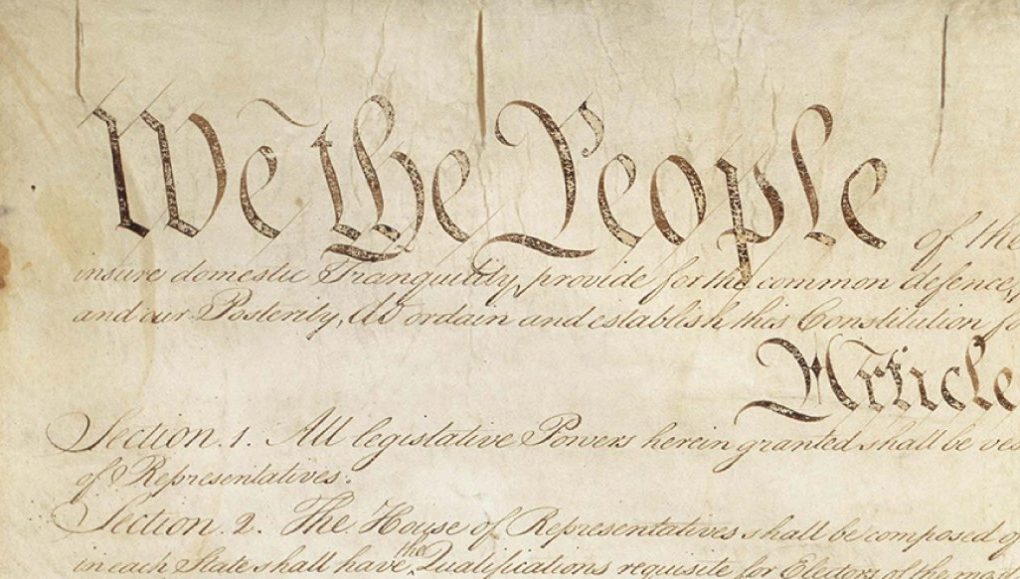We have a holiday, parades and light fireworks to celebrate the signing of the Declaration of Independence. But the Constitution? The legal pact we all love and argue about and, in some cases, die to defend? Sept. 17 marks the 236th anniversary of the day the framers signed the document and sent it to the states for ratification. It took another three years before all the states signed on to the Constitution.

National Park Service
The Constitution is the supreme law of the United States. These four large sheets of parchment define the framework and powers of the federal government. The Constitution was placed with the Department of State in 1789 and stayed in its custody until 1921, when it was transferred to the Library of Congress. It was exhibited there from 1924 until 1954. Since then, the four sheets of paper that comprise the Constitution are on display at the National Archives in Washington, D.C.
A lasting impact
The U.S. Constitution was a compromise that didn’t come together easily. Many of the framers weren’t thrilled with the various ideas, and they argued about it for four months. On signing day, even Benjamin Franklin offered only mixed approval, saying “there are several parts of this Constitution which I do not at present approve…” However, before signing Franklin added this: “But I’m not sure I shall never approve them.” Today, the U.S. Constitution is the world’s longest-surviving written charter of government, and it remains a model for democratic nations around the world.
Article I assigns the responsibility for making laws to the legislative branch.
Article II details the executive branch and the offices of the president and vice president.
Article III establishes the judicial branch with the U.S. Supreme Court as the federal court system’s highest court.
There are seven articles in the Constitution.
Ratification process
It took 10 months for the first nine states to ratify the Constitution and make it effective on June 21, 1788. The rest of the states later approved, including Rhode Island, which did not attend the Constitutional Convention. Several states were unanimously in favor, but many were heavily contested.
Test your knowledge
The bill of rights is:
A) The first 10 amendments
B) The 15th amendment
C) The entire Constitution
Answer: A. There was a concern when the Constitution was written, in 1787, that the federal government would be too powerful. The Bill of Rights was added in 1791 to put a check on the power of the national government and to protect the individual rights of all Americans.
Who wrote the preamble?
“We the People of the United States, in Order to form a more perfect Union, establish Justice, insure domestic Tranquility, provide for the common defense, promote the general Welfare, and secure the Blessings of Liberty to ourselves and our Posterity, do ordain and establish this Constitution for the United States of America.”
A) F. Scott Fitzgerald
B) Benjamin Franklin
C) Gouverneur Morris
Answer: C. Morris, a native New Yorker, represented Pennsylvania at the convention. He was one of five writers of the Constitution but is given full credit for the preamble.
What was our country’s first Constitution called?
A) The Articles of Confederation
B) The Federalist Paper
C) The Emancipation Proclamation
Answer: A
In what city was the Constitutional Convention held?
A) Philadelphia
B) New York
C) Washington, D.C.
Answer: A
The Constitutional Convention in Philadelphia met between May and September of 1787 to address the problems of the weak central government that existed under the Articles of Confederation.
Which of these Founding Fathers did not attend the Constitutional Convention in Philadelphia?
A) Thomas Jefferson
B) John Hancock
C) John Adams
D) All of them
Answer: D. Jefferson was serving as minister to France, Adams was minister to Great Britain and Hancock turned down the invitation.
Does the Constitution require the speaker of the House to be a member of Congress?
A) Yes
B) No
Answer: B, although a nonmember has never been chosen speaker.
How many signers of the Declaration of Independence signed the Constitution?
A) 76
B) 6
C) 12
Answer: B, George Read, Roger Sherman, Benjamin Franklin, Robert Morris, George Clymer and James Wilson.
Score: 5-7 correct = Supreme Court Justice
The amendments over the years
The Bill of Rights comprises the first 10 amendments to the Constitution, ratified Dec. 15, 1791. There have been 27 amendments over the years.
Sources: National Archives, U.S. Citizenship and Immigration Services, The White House, Constitutioncenter.org
𝗖𝗿𝗲𝗱𝗶𝘁𝘀, 𝗖𝗼𝗽𝘆𝗿𝗶𝗴𝗵𝘁 & 𝗖𝗼𝘂𝗿𝘁𝗲𝘀𝘆: www.mercurynews.com
𝗙𝗼𝗿 𝗮𝗻𝘆 𝗰𝗼𝗺𝗽𝗹𝗮𝗶𝗻𝘁𝘀 𝗿𝗲𝗴𝗮𝗿𝗱𝗶𝗻𝗴 𝗗𝗠𝗖𝗔,
𝗣𝗹𝗲𝗮𝘀𝗲 𝘀𝗲𝗻𝗱 𝘂𝘀 𝗮𝗻 𝗲𝗺𝗮𝗶𝗹 𝗮𝘁 dmca@enspirers.com






